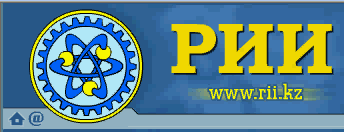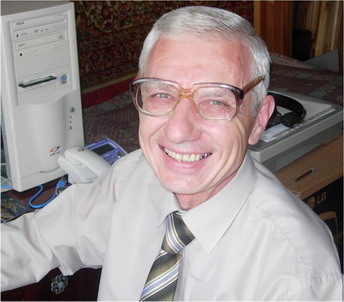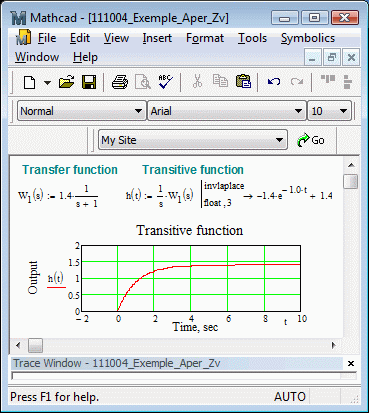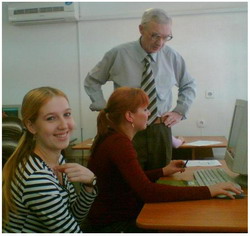Navigating on subjects
and section articles
Simulation
Automatic control theory and adjacent problems
Mathematical description, structural and analytical simulation, and synthesis of objects and automatic control systems
Some articles and methodical instructions to execution of laboratory and practical work on the important problems of ACTh (automatic control theory)
Site materials can be useful to students, bachelors and magisters, the professors teaching ACTh (automatic control theory), and also designers of automatic control systems
- 1. Automatic control. Theory problems
- 2. Simulation and simulation programs
- 3. Methodical support of ACTh (automatic control theory)
- 4. Physical properties of systems and objects and their identification
Links to new articles:
Fedosov B.T. State equations of dynamic objects with delay
10.08.2011
Fedosov B.T. Multi-dimensional (MIMO) objects. The description, analysis and control
8.08.2011
Articles of scientifically-methodical character are oriented on common perception of the basic ideas and therefore are whenever possible explained by simple, accessible language.
Methodical instructions for execution of laboratory works is directed on acquisition and fixing of initial skills of build-up, investigation and optimisation of models of objects and control systems. Therefore they are stated in details, with consideration of the theory and detailed explanations on construction of virtual laboratory benches and investigation of models of objects and control systems. Methodical instructionses are supplied by the application of assemblage of bars and completely serviceable models of objects and control systems that facilitates mastering of a material and acquisition of skills of simulation.
Modern presentation of the theory of automatic control leans against a mathematical apparatus of state spaces, state-variables and transfer functions. This apparatus is powerful and effective. He allows to parse and synthesise the composite models of multivariable systems of automatic control.
However this mathematical apparatus differs abstractness and requires from the student of high mathematical culture and engineering erudition of whom farly not all students can brag.
As a result the majority of ordinary students are not able to master an ACTh (an automatic control theory) course, and therefore and do not apply it in the professional work. The strong students, having mastered a course in a status to work in the field of development of the complex automatic control systems. However the considerable proportion of industrial automatic control systems is simple enough that also the ordinary engineer could develop, set up and operate them.
Thus mathematical state-variable approaches, being the abstract, difficultly assimilated students at the studying initial stage, turn to "transcendental object" when the description and analysis generality becomes as though end in itself.
Simplification of the task of mastering of the theory of automatic control by students at the first stage of its studying can be executed an offered procedure of presentation of a course of an ACTh (an automatic control theory) and its laboratory-methodical supporting against the programs of object-oriented and analytical simulation of automatic controls systems (VisSim and Mathcad). Such course on forces and students of an average and even a low training level and abilities.
Boris.T.Fedosov
Rudny Industrial Institute,
Rudny, Kazakhstan
About author
Welcome in English version!
Contents of a site will be filled in process of translation of articles on English
The author will accept with gratitude particular wishes on improvement of the text of the English version
Russian version >> Try to use Google translator
On page of readers responses>>
Having mastered a course in an offered volume, having fathomed and having experienced sense of the basic concepts of an ACTh (automatic control theory), having gained skills of work in VisSim and Mathcad, the student with small costs can get down to and mastering powerful, effective, but the abstract mathematical apparatus of description of the automatic control system by state-variables.



 2.1. VisSim
2.1. VisSim

 2.2. Mathcad
2.2. Mathcad

